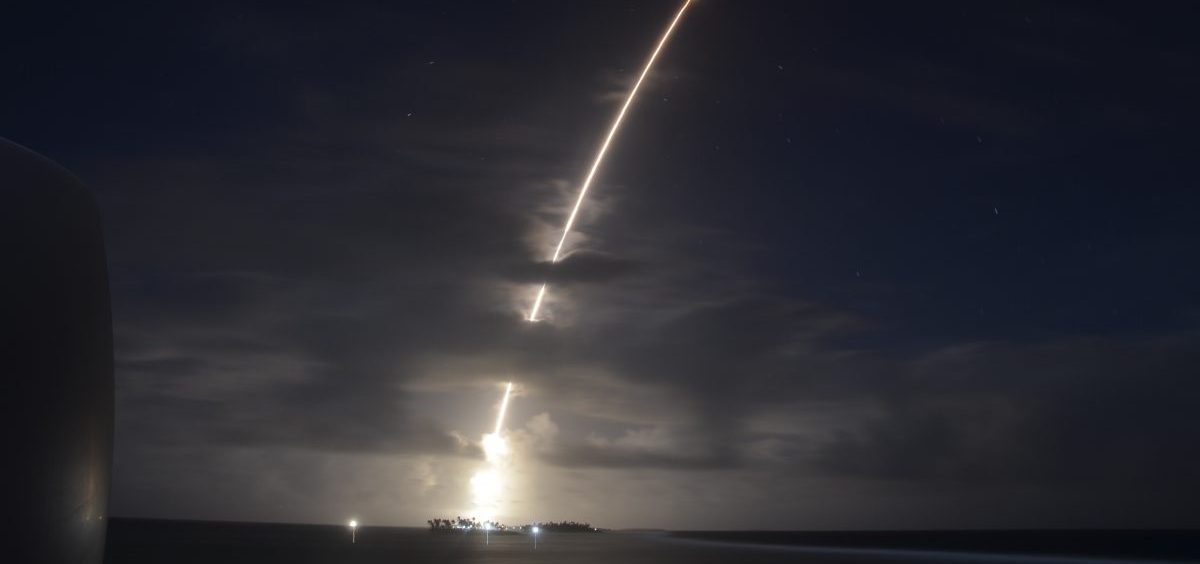News

Missile Defense Agency Claims Successful Warhead Intercept
By: Geoff Brumfiel | NPR
Posted on:
The Missile Defense Agency says it has conducted another successful test of its ground-based interceptor system.
Monday’s test involved a missile carrying a dummy warhead fired from Kwajalein Atoll in the Pacific Ocean towards the U.S. West Coast. Sensors tracked the missile as it flew, and then two interceptors were launched from Vandenberg Air Force Base in California.
The first interceptor successfully slammed into the dummy warhead high over the Pacific. As designed, the second interceptor appeared to continue to seek a target, eventually hitting the largest chunk of debris it could find, according to Thomas Karako, the Director of the Missile Defense Project at the Center for Strategic and International Studies.
“This was the first salvo test,” Karako says, referring to the fact that more than one interceptor was fired at a target. It proved that the trailing interceptor wouldn’t be confused by the leading one, and could continue to seek a target. That’s important, Karako says, because if the system was used against a real warhead, multiple interceptors would be fired. “In the event of a real threat, of course they would fire more than one,” he says.
The test is the latest for the Ground-Based Midcourse Defense system, which is designed to strike intercontinental ballistic missiles coming from countries such as North Korea.
At present, there are 40 interceptors based at Ft. Greely, Alaska, and four at Vandenberg. The latest test is the third success in recent years. In 2017, a single interceptor struck a single warhead in a similar test. And in 2014, an interceptor struck a warhead delivered by a smaller, intermediate range ballistic missile.
“I think yesterday’s test contributes substantially to the confidence of the warfighter and the American people,” Karako says. “This system has been proven yet again.”
But not everyone is convinced. “The test was really secretive, much more so than in past years,” says Laura Grego a physicist with the Union of Concerned Scientists. Grego notes that details about the nature of the intercept make it difficult to tell whether the system would work in the real world. “It was called a success, but we can’t tell from public information how high the bar for success was set.”
Karako says that the system as it is currently configured can provide some defense against a small nuclear upstart like North Korea. But he says it would be easily overwhelmed by the larger nuclear arsenals of countries such as Russia and China.
Grego cautions against relying on the system at all. “We should not be thinking about the [Ground-Based Midcourse Defense] as a robust defense, or a robust deterrent. It does not provide protection in a real-world sense,” she says.
The Pentagon’s missile defense review calls for increasing the number of interceptors to 64 as soon as 2023. Even that would not provide a global defense, and the report also calls for investigating space-based systems that might provide more comprehensive coverage.
Earlier this year, President Trump called for a missile defense system that could “detect and destroy any missile launched against the United States, anywhere, any time, any place.”
9(MDI4ODU1ODA1MDE0ODA3MTMyMDY2MTJiNQ000))

